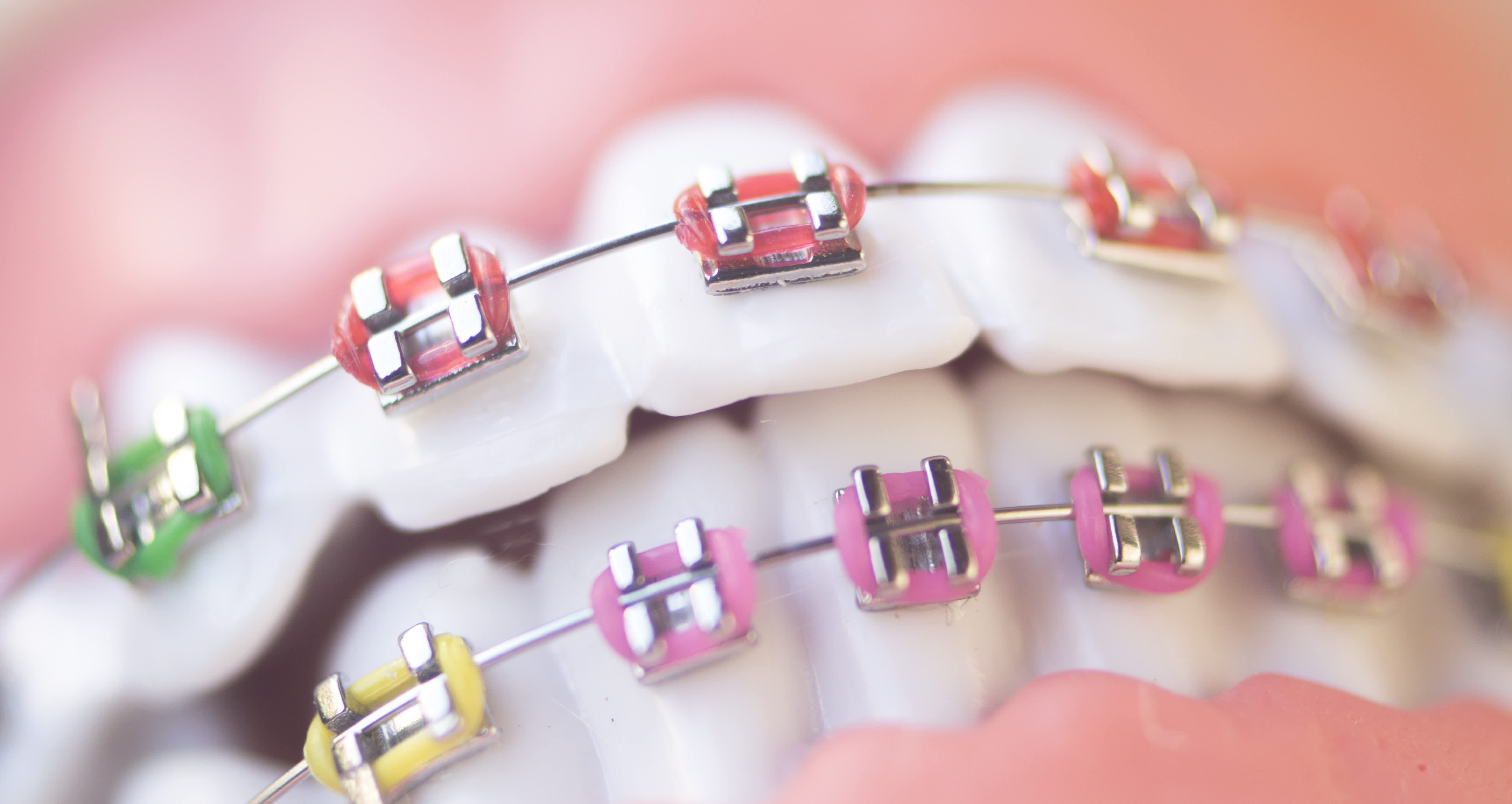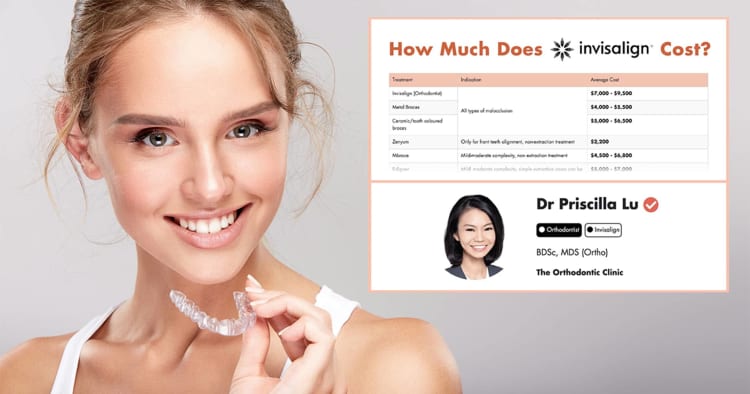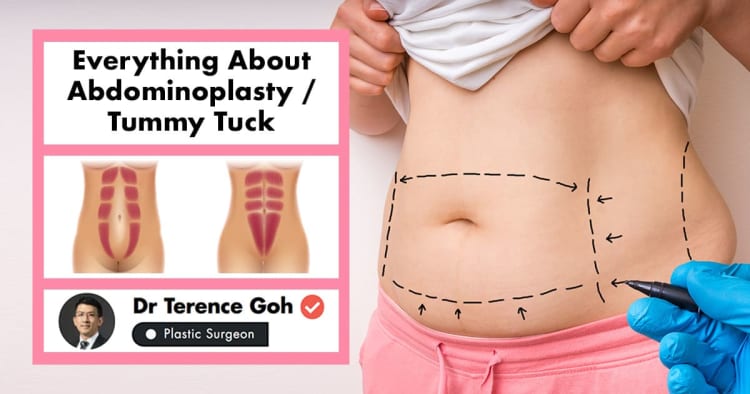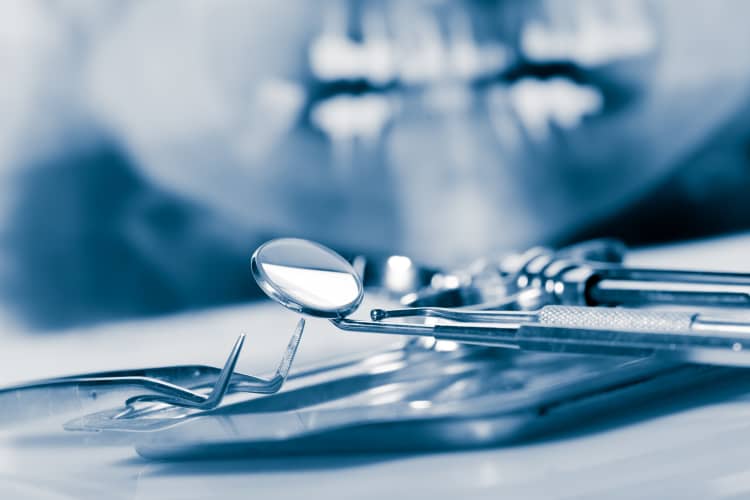Wondering what a Smile Makeover is and how Invisalign treatment plays an important role in getting the smile you want? Join our webinar to learn more about Invisalign treatment and aesthetic dentistry.
Title: Ask us Anything about Invisalign Aligners and Smile Makeover: Getting your 10/10 Smile
Date: 5 November 2021
Time: 8:00pm
Register here: https://bit.ly/3BBJtsP
One of the most common enquiries received by dentists in Singapore is about the cost of Invisalign treatment.
This post contains the most up-to-date information you are looking for with regards to the price of Invisalign treatment in 2020, and what factors affect the price. After all, some dental clinics charge $4500, while others charge up to $9500, so I'm sure you want to find out why!
I will also summarise all your clear aligner alternatives in Singapore, and how much they cost.
Do note that this post purely covers pricing-related information on Invisalign. Head over to this other guide post for a much more comprehensive overview of Invisalign treatment in Singapore. This other guide post explains all your treatment options for braces in Singapore.
1. How much does Invisalign cost in Singapore?

In Singapore, Invisalign costs range from about $7000 - $9500 in total for treatment by an orthodontist (braces specialist).
Some dental clinics are able to quote lower prices (i.e. in the $4500 to $6000 range) because they do not include pre-treatment, mid-treatment and aftercare expenses, for example:
- Dental X-Rays
- Retainers
- Bite adjustments
- Sectional braces or auxiliaries to achieve a better bite at the back teeth
Most importantly: If you were quoted a lower price, do ask your dentist if it includes refinement costs to achieve a better treatment result. This may involve changing of attachments and a re-scan or re-impression, followed by a new series of aligners at the end of your original course of treatment.
Ultimately, the actual cost of your Invisalign treatment will depend primarily on your individual case needs.
Simpler cases require fewer aligners, while more complex cases require more aligners, so it may be helpful to get a personalised cost estimate from a few different dentists. In general, Invisalign treatment that takes 1 year will be far less costly than treatment that takes 2 or more years.
2. What accounts for the difference in Invisalign costs?

Your Invisalign treatment options are broadly divided into 4 categories:
- Comprehensive
- Moderate
- Lite
- Express
These categories demarcate the number of aligners manufactured for you, and by extension, the laboratory fees that your dentist has to pay to Invisalign. More details can be seen in the table below.
As explained, the main differences in cost are due to the complexity and your case requirements.
If your case requires a lot of tooth movement (ie. more aligners), a Comprehensive treatment package is advisable. If your case requires tooth extractions to create space to correct crowding or protrusion, this will usually result in a longer treatment time and require a comprehensive treatment option.
On the other hand, you may be suitable for a Lite package if you only have minor crowding (Eg. if you had previous braces treatment but your teeth have relapsed). You should definitely consult an orthodontist to see which one is more suitable for you.
Invisalign treatment options comparison
Comprehensive Package
Moderate Package
Lite Package
Express Package
Aligners (per arch)
As many aligners as needed to reach clinical goal.
Up to 26 aligners
Up to 14 aligners
Up to 7 aligners
Treatment and clinical parameters
Moderate to severe crowding/spacing, vertical and AP discrepancies, pre-restorative.
Mild to moderate skeletal discrepancies, crowding, spacing, vertical discrepancies, pre-restorative treatment.
Class I, mild crowding/spacing, non-extraction, pre-restorative.
Treatment of relapse and minor movement.
Additional Aligners
Unlimited sets of Additional Aligners can be ordered prior to treatment expiration date.
Unlimited sets of Additional Aligner included in the first 2 years after shipment date of primary orders.
Two Additional Aligner sets included, available prior to treatment expiration date.
One Additional Aligner set included, available prior to treatment expiration date.
Treatment expiration
5 years
3 years
2 years
1 year
Other Invisalign cost factors
Other factors that may increase costs include:
- Complexity of treatment: Number of refinement adjustments needed. Whenever a dentist/orthodontist has to do a refinement, they may need to remove some or all the attachments bonded to the teeth, and replace these with new attachments. This adds to the cost of the treatment.
- Pre-treatment and aftercare expenses
- Overhead costs of the dentist
- Invisalign lab fees: Clinics who do less cases of Invisalign per year pay more lab fees to Invisalign.
3. Invisalign lab fees that dentists pay are variable
One of the strengths of Align technology (the owner of Invisalign) is its marketing. You may have heard of Invisalign through a radio ad or a Facebook ad. Its product name is almost ubiquitous.
As part of their marketing strategy, Invisalign assigns dentist to 1 of 10 tiers:
Bronze (performs least number of Invisalign cases a year)
Silver
Gold I
Gold II
Platinum
Platinum Elite
Diamond
Black Diamond
Blue Diamond
Red Diamond (performs most number of Invisalign cases a year)
Dentists who are in the higher tier are offered a higher discount on the lab fees. This is the company’s strategy to encourage dentists to take up more Invisalign cases per year.
Having said that, Align technology does monitor the price to the consumer. Hence, the overall price range in Singapore remains in the $7,000 - $9,500 range despite the difference in lab fees. If you are thinking of getting Invisalign, you can get a few quotes from different clinics to compare the prices!
Align technology also tends to increase their lab fees every year for research and development purposes. However, most clinics absorb these price hikes and do not vary their treatment fee from year to year.
4. Express, Lite, Moderate or Full Invisalign treatment?
As a general guide, each aligner is able to achieve about 0.25mm of tooth movement.
Your dentist/orthodontist will determine which treatment option is best suited to you based on the amount of tooth movement required.
However, virtual planning and actual outcomes are 2 different realms. What happens on the computer screen vs what happens in my patient’s mouth can be quite different.
Occasionally, your teeth do not follow the virtual plan, and more aligners are needed to achieve a better result.
Consequently, most dentists prefer to choose a treatment option that allows for a reasonable degree of error, rather than having to get their patients to pay more for additional aligners down the road.
The following section has been added by our editorial team and reviewed by our medical advisory board. We received many enquiries asking about this topic and therefore decided to provide factual information on this.
This section does not reflect the opinions of Dr Priscilla Lu.
5. Should you choose an orthodontist or dentist for Invisalign treatment?
Orthodontist
General Dentist
Four-to-five-year university dentistry training (Bachelor's Degree)
Yes
Yes
Three-year full-time university specialist training in orthodontics (Master's Degree)
Yes
No
Specialises in the diagnosis, prevention, and correction of teeth and jaw malalignment
Yes
No
Addresses problems caused by misalignment, i.e. headache, tooth wear etc
Yes
To a limited extent
Undertakes ongoing training in new orthodontic technology as an orthodontist
Yes
Offers general dentistry, such as check-ups, fillings and hygiene
Yes
Extracts teeth if necessary
Yes
Offers cosmetic dentistry such as veneers and bleaching
Yes
This is a difficult question to answer for me as it is such a contentious subject.
The importance of orthodontic training
To be an orthodontist (a specialist in braces), one must undergo an additional 3-year full-time University Masters training programme. [1] [2]
At the end of the 3-year programme, candidates are assessed based on their competency in performing orthodontic treatment without supervision.
In other words, orthodontists undergo a more structured training programme and rigorous exams, as compared to general dentists who also offer Invisalign treatment.
Is Invisalign treatment by an orthodontist always better than a dentist?
No. When Invisalign was first founded in 1997, both general dentists and orthodontists had to embrace a new technology and learn new techniques to harness a different mode of moving teeth.
There are general dentists who perform great work. Conversely, some orthodontists who are so well versed in conventional braces treatment that they may not embrace Invisalign treatment as readily.
At the end of the day, it really boils down to finding a doctor that can provide you with a safe treatment journey.
If you are still sitting on the fence, it may be helpful to seek a consultation with both a dentist and an orthodontist and select your treatment provider based on each doctor's objective and factual merits in their area of expertise.
6. If Invisalign manufactures my retainers in a lab, why does the dentist I choose make a difference?
A dentist is checking an Invisalign retainer
Invisalign is a laboratory that harnesses 3D technology, as well as their own proprietary software (Clincheck) to manufacture aligners. Invisalign does not diagnose or treat individual cases. How and what to manufacture still comes from your dentist's prescription.
The process begins with a proper diagnosis of your case and customized treatment plan which is the most crucial part of this whole treatment. Your dentist’s treatment plan will then guide the Invisalign technician as to how to virtually position your teeth.
Once the technician has completed the virtual setup of your teeth, he will send the file back to your dentist.
Your dentist will then assess the setup and make the necessary amendments based on his knowledge and understanding of achievable tooth movements with aligners.
On a computer software, you can move teeth anywhere you like. However, only your dentist will be able to know what are the biological limits, and what is feasible.
Invisalign treatment relies heavily on your dentist’s input on how to position the teeth. This is why it important to find a dentist/orthodontist that you are comfortable with!
Your dentist's work doesn’t end there. Close monitoring of your treatment is required to ensure your teeth are following the virtual plan.
If at any point some teeth are not following the plan, your dentist will have to decide on the course of action needed to get back on track. Hence, it's not unusual for dentists to perform refinement adjustments during Invisalign treatment.
7. Are there any subsidies or discounts for Invisalign treatment in Singapore?

Unfortunately, you can't make use of Medisave to pay for Invisalign treatment as it's not considered a surgical procedure. [3]
There are also NO subsidies from the Ministry of Health for braces treatment in government hospitals, tertiary institutions or in private clinics.
The main rationale for this is that Invisalign treatment is considered to be "elective", meaning that treatment can often be delayed until a more opportune time.
Hence, it will be hard to justify tax payers' money for a procedure that doesn't require immediate attention as compared to e.g. a dental infection.
What about dental insurance for Invisalign?
Dental cover for braces is usually an additional benefit that does not come as standard on most health insurance plans.
Furthermore, Invisalign treatment is considered an aesthetic orthodontic treatment and is usually not covered even with a dental cover in your insurance plan.
8. How much do Invisalign alternatives and other clear aligner brands cost?

Treatment
Indication
Average Cost
Invisalign (Orthodontist)
All types of malocclusion
$7,000 - $9,500
Metal Braces
$4,000 - $5,500
Ceramic/tooth coloured braces
$5,000 - $6,500
Zenyum
Only for front teeth alignment, non-extraction treatment
$2,200
Mbrace
Mild-moderate complexity, non extraction treatment
$4,500 - $6,800
Ecligner
Mild- moderate complexity, simple extraction cases can be attempted
$5,000 - $7,000
Some clinics offer in-house aligners
Mild crowding, mild spacing
$150-$250 per aligner, some clinics offer treatment packages of $1,500
Also read how Invisalign compares to other Clear Aligner brands.
9. How much does the Invisalign consultation cost?
Most Invisalign consultations cost $50-$100 on average. This excludes the records that may be taken on the consultation visit should you decide to go ahead with Invisalign treatment.
Ask the front staff on the phone about the consultation fees before you make an appointment, or get price quotes from different dentists here.
Also read: 8 Orthodontic Clinics to Consider for Your Invisalign Treatment in Singapore (2020).
I hope this post was helpful in your search for a good Invisalign provider in Singapore!
Dr Priscilla Lu is an orthodontist at The Orthodontic Clinic at Pacific Plaza in Singapore. She obtained her Bachelor of Dental Science with Honours from the University of Melbourne. Passionate about orthodontics, after graduation she pursued further education and achieved a Master of Dental Surgery in Orthodontics from the National University of Singapore (NUS). Dr Lu's orthodontic treatments include early interceptive treatment for young children, comprehensive treatment from tweens to adults using fixed braces, Invisalign and lingual braces.














